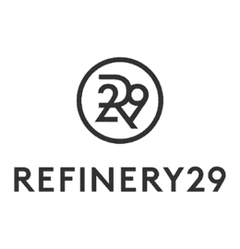SPF 30 Non-Aerosol Spray

Feels like pure sunshine and goes on like a breeze. Our best-selling SPF 30 Non-Aerosol Spray smells like a vacation in a bottle, plus we never use chemical propellants so there’s always a reason to smile. Sprays from any angle- upside-down, sideways, any which way, so you can get every spot even on your own.
- Dermatologist Recommended, Safe for sensitive skin
- Broad spectrum protection against UVA and UVB rays
- Spray ensures full-coverage from any angle
- Non-Aerosol, free of chemical propellants
- Formulated to not stain your clothing or sting your eyes
- Zero White Cast
- Tested For & Free of Benzene Contamination
- Hawaii Reef-Friendly (Act 104)
- Light vanilla and coconut aroma to inspire a nostalgic yet elevated trip to your childhood
Unlock the bottle by turning the cap a quarter turn. Spray along the body or face 15 minutes before sun exposure. Reapply after 80 minutes of heavy sweating and swimming. Remember to continuously apply at least every two hours when under the sun.
ACTIVE INGREDIENTS
Avobenzone 3%, Homosalate (7.5% in SPF 30) (10% in SPF 50), Octisalate 5%, Octocrylene 5%
INACTIVE INGREDIENTS
Fragrance, SD Alcohol 40-B, Tocopheryl Acetate, VA/Butyl Maleate/Isobornyl Acrylate Copolymer
As Seen In
“The only sunscreen I’ve ever been excited to reapply. The brand-new formula feels like a weightless serum for the neck down, and I can’t get enough of it.”
“An 11/10 SPF experience…Feel-Good Sunscreen passes the vibe check.”
“Never have I ever been this obsessed with a sunscreen…we’ve finally found our sunscreen soulmate.”
"This sunscreen looks as good as it feels, with the smoothest, lightest application."
"I don't generally get excited about dousing my pale body in sunscreen, but Bask changed my mind. It's the most lightweight mist that actually hydrates my skin, without feeling greasy or sticky. Plus, it looks so cute in my beach bag."
What Customers Are Saying
Frequently Asked Questions
-
We ship everywhere in the United States (and US territories) and Canada.
-
Mineral and chemical sunscreens are both effective UV filters that help to prevent sun burns and premature skin aging.
Chemical sunscreens use a variety of FDA-approved UV filters made from organic compounds to protect your skin. They work by absorbing into the skin and dissipating UV rays.
Mineral sunscreens are made from the inorganic compounds Zinc Oxide and/or Titanium Dioxide. Contrary to popular belief, these filters do not reflect UV. They reflect *some* UV, but mostly work by absorbing UV energy. When using these products, it's important to get a smooth application by rubbing them in as much as possible. When you do this, you ensure that your SPF is effective. When you don't, you run the risk of a rigid application which can degrade the product's efficacy.It's important to know that all sunscreens are chemicals that are made in labs. The primary difference between so-called "mineral" / "physical" and so-called "chemical" sunscreens is that mineral chemicals are inorganic compounds and "chemical" sunscreens are made from organic compounds. "Chemical" or Organic sunscreens tend to be both more effective and more cosmetically elegant.
Which one is right for you? That’s a matter of personal preference. At Bask, we think the best sunscreen is the one that you are going to use! The three key things to avoid in sunscreen products are: oxybenzone, aerosols with chemical propellants (Bask uses a non-aerosol spray free of chemical propellants), and nanoparticle-zinc.
You should also avoid chemical/mineral hybrid products. It's totally fine to layer a mineral on top of a chemical, but we don't currently recommend purchasing sunscreens that formulate a chemical active and a mineral active together.
The other important factor to consider when choosing between a mineral and chemical sunscreen is environmental. The carbon footprint of mineral sunscreens is exponentially higher than that of chemical/'organic sunscreens. Therefore, mineral sunscreens contribute far greater to global warming - which is not only the greatest threat facing our environment, but also the greatest threat to coral reef.
-
Broad spectrum means that a sunscreen protects you against both UVA and UVB rays. The way to remember the difference between the two is easy: A for aging, and B for burning. UVA rays penetrate deeper and are most responsible for wrinkling anad aging; UVB rays cause sunburns. Both UVA and UVB rays can lead to skin cancer. It is very important to make sure to use a broad spectrum sunscreen that offers coverage against both.
-
Not only is the sun good for you, but it’s great for you! It’s energizing and beautiful, and it’s the source of all life. Being in the sun is proven to have incredible physical and mental health benefits, and you should spend at least 120 minutes in the sun every week. It’s also no secret that 90% of skin cancers and skin aging is caused by UV exposure. That’s why we exist. Bask is an empowerment tool for you to get in the sun safely. There’s a big difference between basking and burning. So, wear your Bask, and go out and play!















